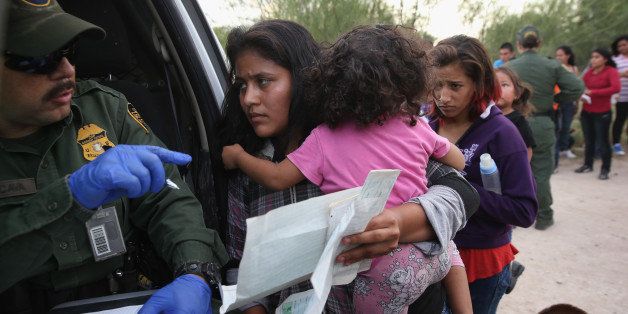
There is a crisis of tragic proportions concerning the children of Guatemala, El Salvador and Honduras...but the crisis is not at the U.S. Border. The 57,000 children who have recently amassed there are a tiny percentage of the hundreds of thousands who daily confront such extreme conditions that they've been driven to these extreme means in a desperate search for safety and sustenance. The long simmering crisis is in their home countries, in the neighborhoods to which they are terrified to return. As long these conditions continue, the crisis will continue to grow, and the children affected by it will continue to make the long, lonely journey to our border.
If endemic poverty were the only element, the path to solutions might be clearer, and the pressure forcing these very young children to leave their homes and parents would surely be less intense. Adding drugs, gangs and violence to equation, creates a situation akin to being on the ledge of a burning building, in which the only option is to jump. Massachusetts Gov. Duval Patrick was roundly criticized for comparing our country turning them away to the 1940's refusal to accept Jews attempting to escape Nazi Germany on the S. S. St. Louis...but their fear of being killed if forced to return to their home neighborhoods is just as real.
Taking them in, and potentially hundreds of thousands to follow, would be a humane, but fraught decision. It would also undoubtedly further stress already strained resources. Whether the U.S. economy could bear that stress can be debated. That it would come with at an outrageous cost, as does trying to plug every leak along a 2,000 miles border, is not debatable. However, if, as the President of Honduras recently suggested, if even a modest percentage of the 3+ billion dollar package the administration has requested (or even the $694 million for deportation the House has proposed) were spent on addressing the root cause of the problem, instead of continuing to treat only the symptoms, the impact of the crisis would be significantly reduced.
This is not merely a theoretical approach. An institution in Honduras has been proving it actually works -- taking imperiled children off the streets, then sending them back into their communities ten years later with the marketable skills and solid hopes for the future that will allow them to become productive members of their own society. Over the past thirty-five years, the residential school and home in Honduras called El Hogar, "The Home", has brought this transformative process to several thousand young lives. El Hogar's graduates have the means and motivation to stay in their own country and to raise the next generation to become responsible citizens, expanding a virtuous cycle that will be the only effective antidote to the vicious cycle of poverty, violence and fear that has created the crisis now finding its way to our borders.
As the Executive Director of El Hogar for the past 13 years, I've had the opportunity to witness the process in action and see these frightened children grow into well-prepared, self-confident young Hondurans who represent the best hope for a long-term solution to the crisis. This work is currently being done on a meaningful, but limited scale, through private donations. If some of the billions spent on hiring border guards, buying trucks, building walls, incarcerating and deporting etc., could instead be invested in a substantial number of programs like this, the dividends would be immediate, in terms of literally saving the lives of some of these children, while easing this new and unsettling challenge at our border...and in the longer term, lead to a more stable and prosperous Central America: a contributing presence to the economy of our hemisphere instead of a sinkhole for tax dollars that can never stop the bleeding...no matter how large or costly the band-aid.
To learn more about the work of El Hogar in Honduras, visit here.